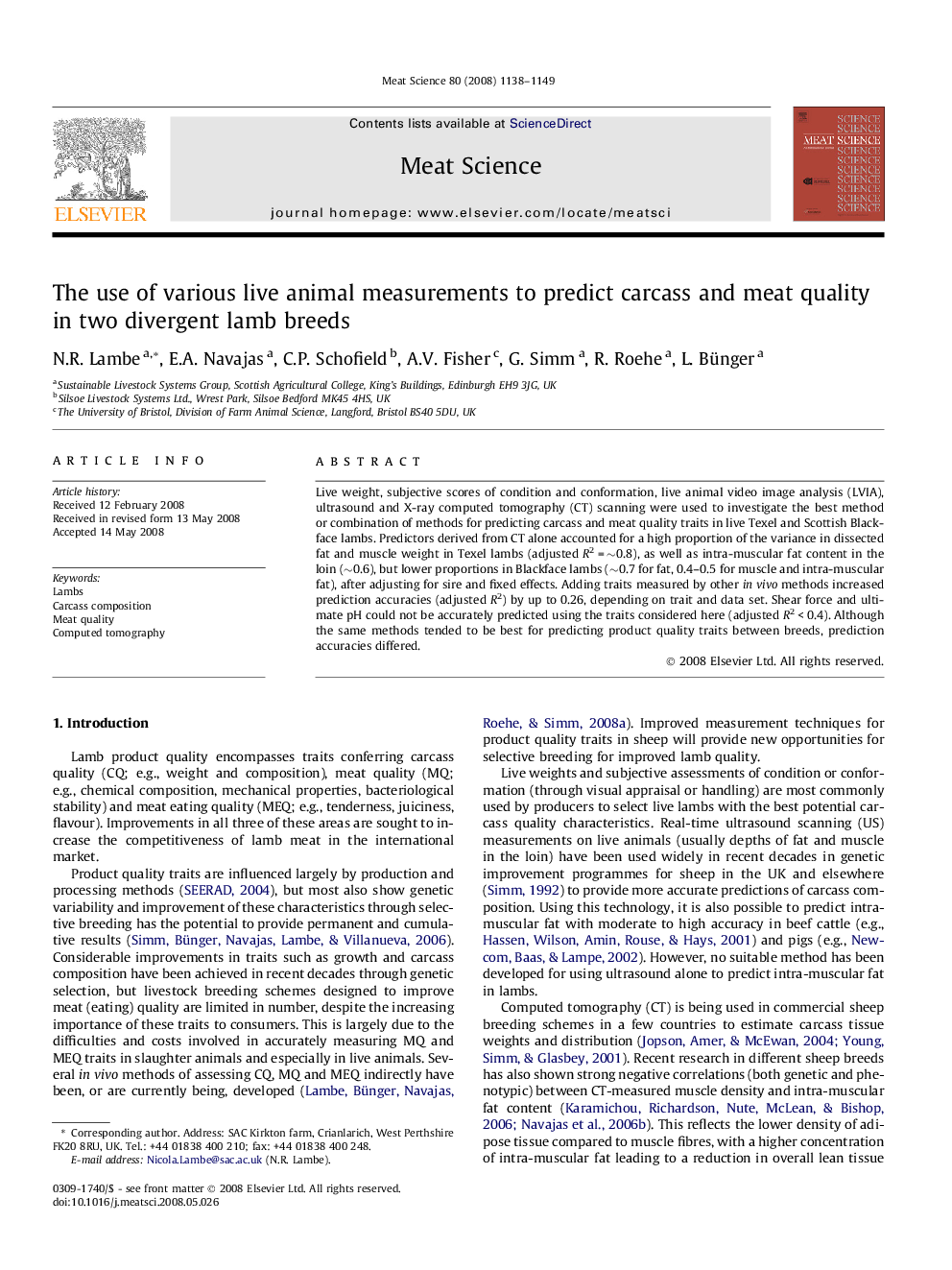| Article ID | Journal | Published Year | Pages | File Type |
|---|---|---|---|---|
| 2450689 | Meat Science | 2008 | 12 Pages |
Live weight, subjective scores of condition and conformation, live animal video image analysis (LVIA), ultrasound and X-ray computed tomography (CT) scanning were used to investigate the best method or combination of methods for predicting carcass and meat quality traits in live Texel and Scottish Blackface lambs. Predictors derived from CT alone accounted for a high proportion of the variance in dissected fat and muscle weight in Texel lambs (adjusted R2 = ∼0.8), as well as intra-muscular fat content in the loin (∼0.6), but lower proportions in Blackface lambs (∼0.7 for fat, 0.4–0.5 for muscle and intra-muscular fat), after adjusting for sire and fixed effects. Adding traits measured by other in vivo methods increased prediction accuracies (adjusted R2) by up to 0.26, depending on trait and data set. Shear force and ultimate pH could not be accurately predicted using the traits considered here (adjusted R2 < 0.4). Although the same methods tended to be best for predicting product quality traits between breeds, prediction accuracies differed.
